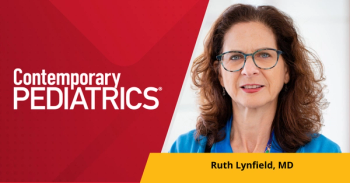
More options and new technology for treating epilepsy and seizures
William Gallentine, DO, explains why he is excited for the year ahead when it comes to epilepsy treatment as new technologies emerge and the treatment landscape changes.
In this Contemporary Pediatrics interview, William Gallentine, DO, clinical professor of neurology, interim chief, Pediatric Neurology, Stanford Medicine Children's Health, breaks down why it is an exciting time for epilepsy treatment and how new technologies are making their way to the pediatric population.
Interview transcript (edited for clarity):
Contemporary Pediatrics:
What are you most excited about going into the new year when it comes to epilepsy and seizure treatment?
William Gallentine, DO:
There's kind of 2 main areas that I'm most excited about within our field. It's really an exciting time in general because we are getting more and more potential treatment options, [when] comes to epilepsy. One side of that is on the surgical side, where we're continuing to push the envelope in our epilepsy surgeries. The field has moved to a point where it has become less invasive, you can do epilepsy surgeries now with lasers where you can kind of focus in on smaller areas and take out smaller areas of brain to do seizure surgeries more safely in terms of the amount of brain that's potentially being taken out, and the potential deficits that you can get. The recovery period is so much greater. So that certainly is 1 thing that's kind of coming along from a surgical perspective, but really moving the field forward. We're developing now more neurostimulators that are being placed into the brain that actually can disrupt seizure activity and offer another option to folks when their medications clearly are not working and are not surgical candidates. So, these deep brain stimulators that are being placed or responsive nerve stimulators that are being placed that actually can even read brainwaves in real time and determine when somebody's having a seizure and apply electrical stimulation that try to abort that seizure, and then change how that brain actually functions over time is really exciting. Over the past couple years those devices have come out and they're finding their way to the pediatric patients, which is amazing from that perspective. The field, in particular with these neurostimulators, is continuing to kind of evolve. The other aspect of it is genetics, and the field of genetics within epilepsy is really just exploding. First and foremost, within our diagnostic capabilities. So, things that you know, 10 years ago, we weren't even able to provide somewhat the diagnosis as to why the seizures occur, the diagnostic testing has gotten so much better now that we can find answers as to why patients have epilepsy and have a clearer and better understanding of their disease process. The hope is that then that leads to better treatments overall. Now that we have a more accurate diagnosis, we can understand the science better, we could then potentially start guiding our therapies in those particular directions. A lot of the where the field is kind of going now is looking towards various different types of gene therapies or gene manipulation therapies that hopefully will ultimately result in substantial improvements in the quality of care we provide for our patients.
Newsletter
Access practical, evidence-based guidance to support better care for our youngest patients. Join our email list for the latest clinical updates.














